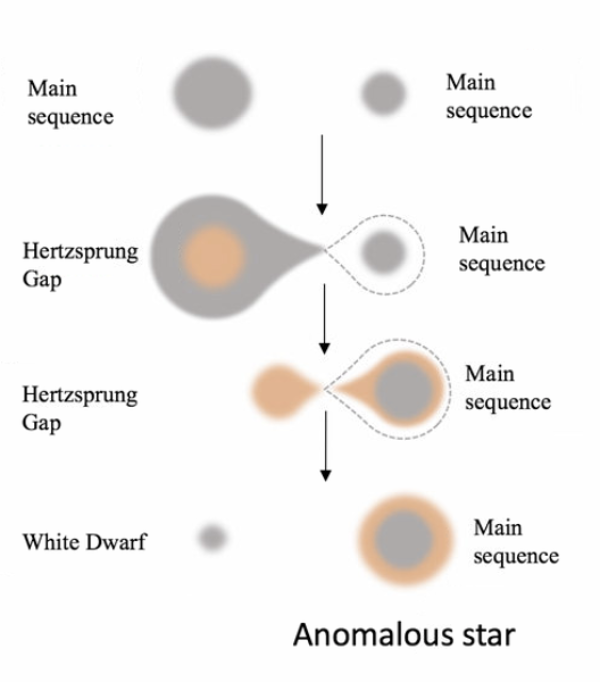A study about multiple stellar populations in globular clusters has been published in the Monthly Notices of the Royal Astronomical Society recently. Phd student WEI Dandan, professor JIANG Dengkai and their cooperators from Yunnan Observatories of Chinese Academy of Sciences, found that the mass transfer of low-mass binaries is another possible way to partly contribute unevolved anomalous stars in globular clusters.
The globular cluster is composed of thousands or even hundreds of thousands of stars, with a spherical appearance. Globular clusters have always been thought as simple stellar populations, in which the stars have the same age, initial chemical composition. But more and more observations provided the evidences that the abundances of light elements (such as carbon, nitrogen, oxygen, sodium) show inhomogeneities among stars within the same globular cluster, called multiple stellar populations. These observations challenge the traditional view of globular cluster. Therefore, many mechanisms have been proposed to explain this interesting phenomenon. However, the origin of multiple stellar populations is still a puzzle until now.
Researchers use the stellar evolutional code (Modules for Experiments in Stellar Astrophysics) to calculate many binary systems, considering the wind, convective, magnetic braking and so on. They investigated whether the mass transfer of low-mass binaries theory is a possible origin of multiple stellar populations.
When the material processed H-burning in the donor star (the initially more massive one) pollutes the surface of the accretor, the accretor will show abundance anomalies. Researchers successfully reproduced the anomalous stars that are consistent with the observations.
In conclusion, this work provides a possible mechanism to account for the multiple stellar populations, which is helpful to well understand the formation of Globular clusters.
Contact:
WEI Dandan
Yunnan Observatories, CAS
Email: wdd@ynao.ac.cn

Schematic illustration of the stable mass transfer scenario. Main sequence、Hertzsprung Gap and White Dwarf represent main sequence, Hertzsprung gap and white dwarf, respectively.(Image by WEI Dandan)